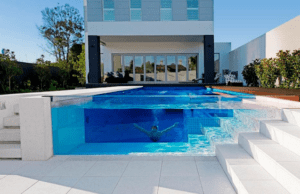Where do most pools leak from? Pool leaks are more common than many people realize. A leaking pool can be a major headache for homeowners, leading to costly repairs and wasted water. Knowing the most common sources of pool leaks can help prevent them from occurring in the first place.

Where do most pools leak from?
The most frequent source of pool leaks is the plumbing system. This includes the pipes that run from the pool equipment to the pool itself. Often, these pipes are made of PVC or polyethylene, which can be prone to cracking and leaking over time. To prevent these pipes from leaking, it’s essential to inspect them regularly and replace them before they have a chance to break.
Another common source of pool leaks is the skimmer. The skimmer is responsible for removing debris from the pool and is typically located near the top of the pool wall. If the skimmer is not regularly cleaned or inspected, debris and other materials can build up and cause damage to the skimmer and the pool itself.
Another potential source of pool leaks is the pool deck. The pool deck is the area around the pool’s perimeter and is where the pool meets the ground. If the pool deck is not sealed correctly, water can seep through the cracks and cause leaks. It’s essential to use a sealant on the pool deck to ensure it is adequately sealed and prevent water from leaking out.
Finally, the pool liner can also be a source of leaks. Pool liners are made of vinyl or fiberglass and can be prone to tearing and cracking over time. To prevent leaks, it’s essential to regularly inspect the pool liner and replace it as soon as any signs of damage are noticed.
By understanding the most common sources of pool leaks, homeowners can take the necessary steps to prevent them from occurring. Regularly inspecting the plumbing system, skimmer, pool deck, and pool liner can help ensure the pool functions correctly and remains leak-free.



